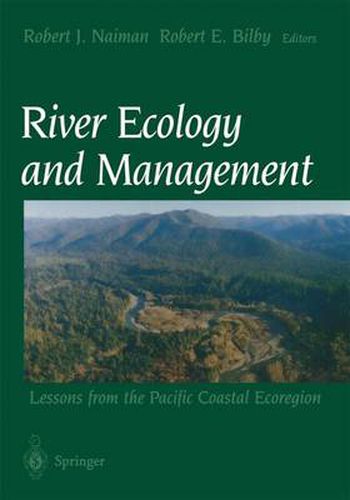Readings Newsletter
Become a Readings Member to make your shopping experience even easier.
Sign in or sign up for free!
You’re not far away from qualifying for FREE standard shipping within Australia
You’ve qualified for FREE standard shipping within Australia
The cart is loading…






This title is printed to order. This book may have been self-published. If so, we cannot guarantee the quality of the content. In the main most books will have gone through the editing process however some may not. We therefore suggest that you be aware of this before ordering this book. If in doubt check either the author or publisher’s details as we are unable to accept any returns unless they are faulty. Please contact us if you have any questions.
Touching all parts of the natural environment and nearly all aspects of human culture, streams and rivers act as centers of organization within landscapes. They provide natural resources such as fish and clean water, transportation, energy, diffusion of wastes, and recreation. Today, with unprecedented demands on streams and rivers by an exponentially increasing human population, a basic ecological understanding of the structure and dynamics of running waters is essential for formulating sound management and policy decisions. The vast Pacific coastal ecoregion of the United States contains an extraordinary array of physical settings and examples of the range of dynamics associated with rivers and their management. The interface between the science and policy of natural resource management is illustrated by examples from this ecoregion, including the protection of riparian forest, the marbled murrelet, salmon, and amphibians. River Ecology and Management: Lessons from the Pacific Coastal Ecoregion includes sections on the Physical Environment, the Biotic Environment, Ecosystem Processes, Management, and Recommendations for the Future. Specific topics include channel dynamics, hydrology, water quality, microbial processes, primary production, fish and wildlife, riparian forest dynamics, organic matter and trophic dynamics, biogeochemical cycling, maintaining biodiversity, monitoring and assessment, economic perspectives, legal considerations, and the role of non-governmental organizations in river management.
$9.00 standard shipping within Australia
FREE standard shipping within Australia for orders over $100.00
Express & International shipping calculated at checkout
This title is printed to order. This book may have been self-published. If so, we cannot guarantee the quality of the content. In the main most books will have gone through the editing process however some may not. We therefore suggest that you be aware of this before ordering this book. If in doubt check either the author or publisher’s details as we are unable to accept any returns unless they are faulty. Please contact us if you have any questions.
Touching all parts of the natural environment and nearly all aspects of human culture, streams and rivers act as centers of organization within landscapes. They provide natural resources such as fish and clean water, transportation, energy, diffusion of wastes, and recreation. Today, with unprecedented demands on streams and rivers by an exponentially increasing human population, a basic ecological understanding of the structure and dynamics of running waters is essential for formulating sound management and policy decisions. The vast Pacific coastal ecoregion of the United States contains an extraordinary array of physical settings and examples of the range of dynamics associated with rivers and their management. The interface between the science and policy of natural resource management is illustrated by examples from this ecoregion, including the protection of riparian forest, the marbled murrelet, salmon, and amphibians. River Ecology and Management: Lessons from the Pacific Coastal Ecoregion includes sections on the Physical Environment, the Biotic Environment, Ecosystem Processes, Management, and Recommendations for the Future. Specific topics include channel dynamics, hydrology, water quality, microbial processes, primary production, fish and wildlife, riparian forest dynamics, organic matter and trophic dynamics, biogeochemical cycling, maintaining biodiversity, monitoring and assessment, economic perspectives, legal considerations, and the role of non-governmental organizations in river management.